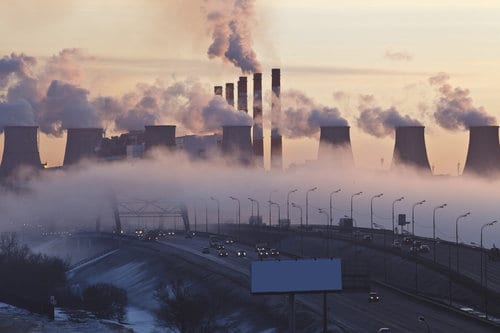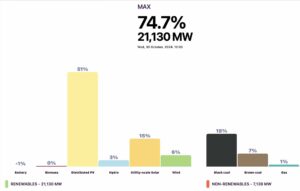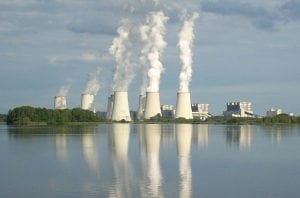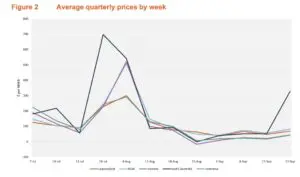The United States government’s Energy Information Administration (EIA) is now forecasting that the country’s energy-related CO2 emissions will decline by 11% in 2020 – which would be the largest decline dating back to 1949.
The EIA made note of the news in both its latest Short-Term Energy Outlook and in a ‘Today in Energy’ feature published on Wednesday.
Earlier this year, the EIA had expected to see a decline in 2020 energy-related emissions, falling in line with the generally lower trend in US CO2 emissions which reaches back to its peak in 2007.
However, and unsurprisingly, the EIA could not have easily predicted the dramatic events which followed in the wake of the global COVID-19 pandemic (putting aside all mention of the Trump Administration’s recalcitrance and intentional ignorance on the issue).
As such, according to the EIA, a large part of the drop in CO2 emissions in its updated forecast stem directly “from estimates of the travel restrictions and general economic slowdown associated with the efforts to mitigate the spread of the 2019 novel coronavirus disease (COVID-19).”
The US energy sector – already generally unprepared for the seismic shift towards a low-carbon economy – began to see demand for petroleum products decline in mid-March, before reaching their lowest levels in decades by mid-April. Specifically, US consumption of petroleum products during the middle of April fell to their lowest levelssince the early 1990s.
A combination of stay-at-home orders – when and if they happened – travel restrictions, and work-from-home arrangements resulted in significantly reduced demand for motor gasoline, distillate fuel oil (primarily consumed as diesel), and jet fuel.
Considering that petroleum is the largest single source of energy-related CO2 emissions in the United States, accounting for 46% of the 2019 total, and, according to the EIA’s latest short-term forecast, petroleum product consumption is set to decline by 11% in 2020 and petroleum-related CO2 emissions will decline by 12%, it is unsurprising that a concurrent impact will be felt across all energy-related CO2 emissions.
As can be seen above, natural gas accounts for the second-largest share of energy-related CO2 emissions – though this is well down compared to petroleum products, at only 33% of the 2019 total. As we have seen elsewhere, natural gas is managing to relatively keep its head above water and will likely only suffer a minor decline in demand of around 4%, resulting in a 4% decline in CO2 emissions in 2020.
Despite the fact that the electric power sector is the largest consumer of natural gas in the United States, and power sector electricity generation is set to decline by 5%, relatively low natural gas prices will result in a decline of only around 1% in power sector natural gas consumption.
This has been bolstered by the closing or reduced operation of many nonessential businesses combined with generally warmer weather so far in 2020, leading to a decline in commercial sector natural gas consumption.
The remaining major energy-related CO2 emitter is the coal sector, which has already seen its emissions fall in each of the past six years, ensuring that it only provides 21% of US energy-related CO2 emissions. In 2020, the EIA expects coal CO2 emissions to fall by another 23% down to 832 million metric tons, or less than half of its peak level in 2007.
With the US electric power sector accounting for over 90% of the coal consumed in the country in 2019, and with natural gas and renewable energy continuing to eat away at any need for coal, the EIA “expects coal to continue to lose market share to natural gas and renewables in the power sector in 2020.”
In 2020, US energy-related CO2 emissions are forecast to fall by 11%, well above the 5% decline in gross domestic product (GDP) expected to be seen across the year. Looking out further, the EIA forecasts energy-related CO2 emissions will increase by 5% in 2021.
However, importantly, this is proportionally less than the expected 6% increase in GDP in 2021, which continues to highlight the disconnect between GDP growth and energy sector emissions.
RenewEconomy and its sister sites One Step Off The Grid and The Driven will continue to publish throughout the Covid-19 crisis, posting good news about technology and project development, and holding government, regulators and business to account. But as the conference market evaporates, and some advertisers pull in their budgets, readers can help by making a voluntary donation here to help ensure we can continue to offer the service free of charge and to as wide an audience as possible. Thank you for your support.












